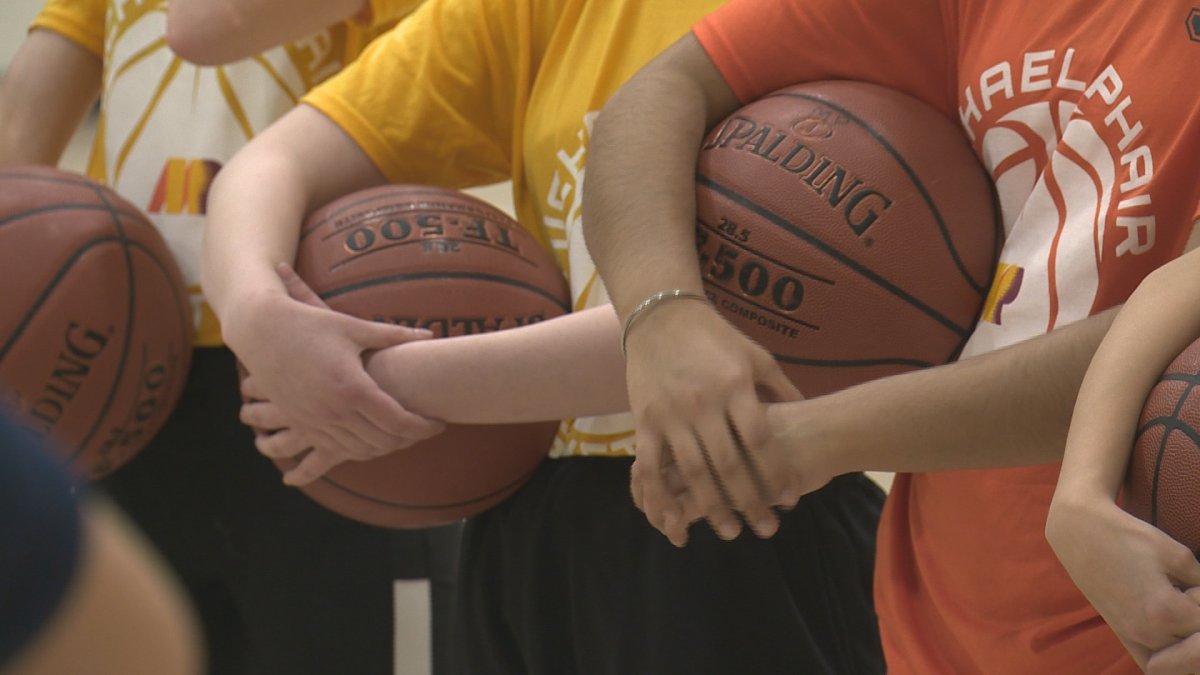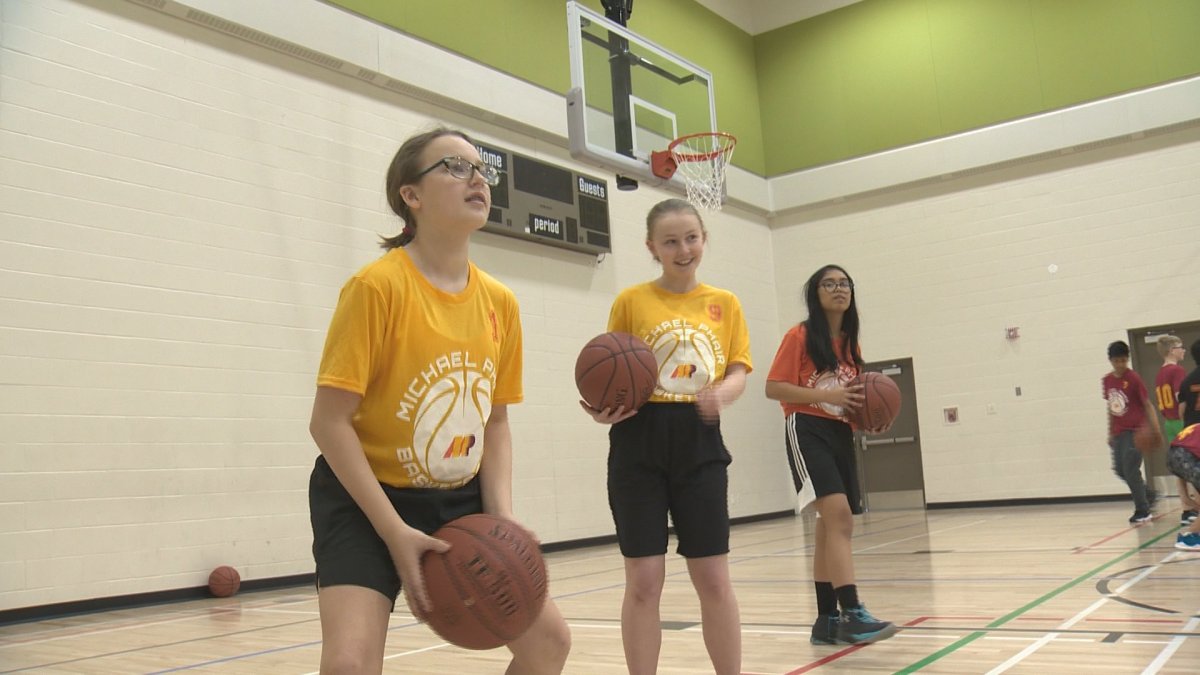For many kids, going through school means trying out and being cut from sports teams. But some schools have brought in “no-cut programs,” giving everyone a chance to play.

At Michael Phair Junior High School in Edmonton, students are selected for senior sports teams but the junior teams are open to all students in grades seven, eight and nine.
“Rather than worrying about cutting, we just say the more the merrier type mentality,” Gregg Brain, the athletic director at Michael Phair, said. “Some of them are here because they want to hone their craft for a senior team. Others are here just because they just like to play.”
Now, nearly half the student population is on a team. Last year, it was between five and 10 per cent.
The junior basketball team has 37 members. They do not play in a league but practice regularly and participate in a couple of weekend tournaments.
“It gets crowded at some times, but I get used to it,” said grade 7 student Kayla Puff.
“It’s really fun because there’s no stress on you. You just show up and play.”
Kayla’s mom has watched her daughter’s confidence grow since making the team. She doesn’t know if Kayla would be playing basketball if there were cuts.

Get weekly health news
“She would have tried but she might have got cut because coming out of elementary there’s not a lot of opportunities to develop these skills. She might have got cut and then maybe not even tried the next year,” said Kathy Puff.
The curling team has 14 players on a four-member rotation. It is the fourth sport this year for grade 9 student Atleigh Fuhr. She’s also been on the volleyball, soccer and cross-country teams.
“It’s just something that you can play for the rest of your life. And I have always played competitive contact sports. So it’s just cool, it’s cool to learn something different.” said Fuhr.
Bain believes the success of the program is measured in how many students continue to show up for practice. He admits in the beginning, he had some parents asking why their children were not playing in a league.
“We are trying to get parents to open their eyes and say, ‘Hey, we want participation and sometimes it is more than the championship wins that we are looking for. It’s just to give kids some skills and a great social setting as well,'” said Brain.
What about building resiliency and coping skills?
A researcher at the University of Alberta has been studying the impact of youth being cut from sports teams. Lauren Sulz has found students who don’t make the team are less likely to participate in the sport they were cut from. The parents and students she heard from don’t report developing coping skills.
“I would argue that the skills that they get from participation in that entire sports season and future participation in sport always that one opportunity to develop one skill of resiliency.”
Watch below: Lauren Sulz is studying the impact of youth being cut from school sport teams. She believes students have more to gain from being on the team than being cut.

Sulz believes eliminating tryouts and opening up the roster to everyone not only increases physical activity but helps students feel more connected to their school.
“It’s also been connected to greater attendance rates, higher educational aspirations. The connection between teacher, coaches and their classmates.”
She says there are several schools in Alberta following a no-cut program and hopes this is the future of school athletics.
“We are not saying that competition and winning is bad. We actually think competition is good,” said Sulz
“What we’re trying to do with our research is reframe school sport so that we can focus on high participation rates, development and winning. And we’re getting closer to being able to do that within the junior high setting.”
Want more ways to keep up to date? Check out the “Family Matters” podcast! If you haven’t subscribed yet — what are you waiting for?
Subscribing’s easy! Here’s how…

- Open the Apple Podcasts app, search for “Family Matters” and select it from the list of results.
- Once on the Family Matters page, click the “Subscribe” button to have new episodes sent to your mobile device for free.
- Click the name of an episode from the list below to listen.

- Open the Google Podcasts app, search for “Family Matters” and select it from the list of results.
- Once on the Family Matters page, click the “Subscribe” button to have new episodes sent to your mobile device for free.
- Click the name of an episode from the list below to listen.












Comments